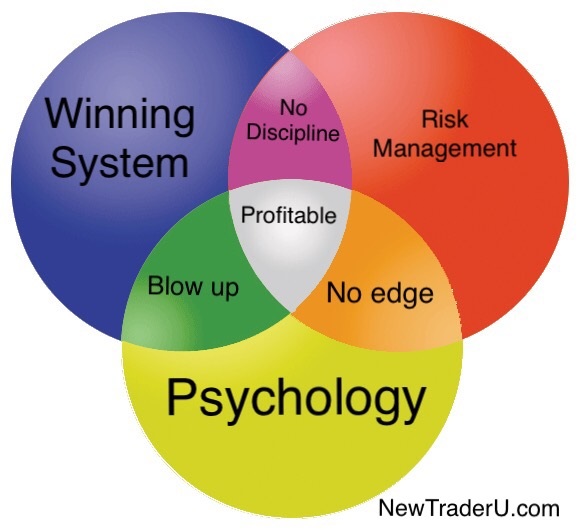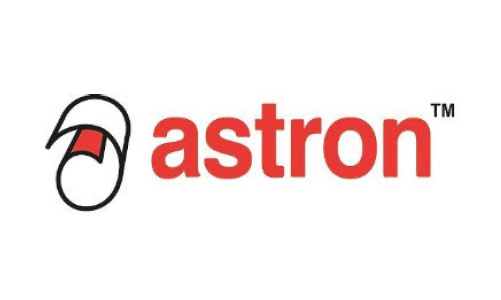
NSE has announced the list of trading holidays for the calendar year 2018. We are pleased to share the list of trading holidays for NSE & BSE below.
| Holiday |
Date |
Day |
| Republic Day |
January 26, 2018 |
Friday |
| Mahashivratri |
February 13, 2018 |
Tuesday |
| Holi |
March 02, 2018 |
Friday |
| Mahavir Jayanti |
March 29, 2018 |
Thursday |
| Good Friday |
March 30, 2018 |
Friday |
| Maharashtra Day |
May 01, 2018 |
Tuesday |
| Independence Day |
August 15, 2018 |
Wednesday |
| Bakri ID |
August 22, 2018 |
Wednesday |
| Ganesh Chaturthi |
September 13, 2018 |
Thursday |
| Moharram |
September 20, 2018 |
Thursday |
| Mahatama Gandhi Jayanti |
October 02, 2018 |
Tuesday |
| Dasera |
October 18, 2018 |
Thursday |
| Diwali-Laxmi Pujan* |
November 07, 2018 |
Wednesday |
| Diwali-Balipratipada |
November 08, 2018 |
Thursday |
| Gurunanak Jayanti |
November 23, 2018 |
Friday |
| Christmas |
December 25, 2018 |
Tuesday |
*Muhurat Trading will be conducted on Wednesday, November 07, 2018. Timings of Muhurat Trading shall be notified subsequently.
Holidays On Saturday / Sunday
| Holiday |
Date |
Day |
| Ram Navami |
March 25, 2018 |
Sunday |
| Dr.Baba Saheb Ambedkar Jayanti |
April 14, 2018 |
Saturday |
| Id-Ul-Fitr (Ramzan ID)* |
June 16, 2018 |
Saturday |
Holidays For Clearing & Settlement
| Holiday |
Date |
Day |
| Chhatrapati Shivaji Maharaj Jayanti |
February 19, 2018 |
Monday |
| Gudi Padwa |
March 18, 2018 |
Sunday |
| Annual Bank Closing |
April 01, 2018 |
Sunday |
| Parsi New Year |
August 17, 2018 |
Friday |
| Id-e-Milad |
November 21, 2018 |
Wednesday |
The official list is available here.
Team StockArchitect
Look: I’m not a genius or anything.
But one thing I know is this…
If I want to be a successful trader, then I need to model the process used by successful traders.
And the best way to do so is to read the best trading books out there.
You’re probably wondering:
“But Rayner, there are thousands of books available. Which are the best trading books to read?”
Well, I’ve got you covered because I’ve personally read more than 200 trading books and these are my top recommendations.
Continue Reading →

If you have a winning system with the right risk management you can still fail to be profitable if you do not have the right trading psychology to trade it with discipline.
If you have a winning system with the right trading psychology you can still fail to be profitable by blowing up during a losing streak without the right position sizing and risk management.
If you have the right risk management and trading psychology you can still fail to be profitable because you are trading with no edge because you don’t have a winning trading system.
Profitable trading requires three dynamics: a winning price action trading system with an edge, proper position sizing with risk management, along with the right trading psychology to allow you to trade your process with discipline.
The original post is authored by Steve Burns of newtraderu.com and is available here.
Benchmark indices gained ground on Friday as investors cheer after the exit polls that released their survey results at the end of the final phase of polling in Gujarat on Thursday evening predicted that the Bharatiya Janata Party (BJP) was set to retain Gujarat and wrest Himachal Pradesh from the Congress.
While survey agencies differed in their seat projections, nearly all predicted almost 100 or more seats for the BJP, with the party set to extend its 22-year rule in the state. Survey agencies also said the election, in the last phases, was focused on the leadership of Prime Minister Narendra Modi, and overcame the brewing anti-incumbency against the Vijay Rupani government and dissipated the anger that sections of Gujarati society had felt about specific local issues.
The S&P BSE Sensex ended at 33,462, up 216 points while the broader Nifty50 index settled at 10,333, up 81 points
Broader markets outperformed the benchmark indices with both BSE Midcap and BSE Smallcap indices up over 1%.
Maruti Suzuki India shares touched a fresh all-time high of Rs 9,237, rising 1.3 percent intraday after the global brokerage house raised target price sharply. While maintaining a buy call on the stock, Citi has increased its price target to Rs 10,600 (from Rs 9,400 per share earlier), implying 16% upside from Thursday’s closing price.
Continue Reading →

Astron Paper and Board Mills Ltd. (APBM) is engaged in manufacturing of kraft paper and catering to the packaging industry. It has a current capacity of 96000 mt p. a. Post proposed expansion plans, its total installed capacity will stand increased to 129000 mt p. a. Its manufacturing and dispatch process has been assessed and certified ISO 9001:2015 and ISO 14001: 2015 by SGS United Kingdom Ltd. It is using waste paper as its main raw material and thus saving the usage of wood, thus following green initiative. APBM’s kraft paper is used by packaging industry in manufacturing corrugated boxes, liners, sacks and composite containers.
Continue Reading →
When we find an attractive stock to invest in, we outlay money, aka invest, to earn an attractive return and the investment will involve a degree of risk.
One of the most dangerous, commonly accepted and ill thought out concepts in investing is the risk / return trade off.
That is: high returns equals high risk.
Unfortunately, Investopedia continues to spread this type dogma, as you can see by the graph below.

Volatility (standard deviation) is not risk!
The appropriate definition of risk is from the Oxford dictionary (or any other branded non-financial dictionary) as: Exposure (someone or something valued) to danger, harm, or loss.
Continue Reading →
In late July, Oaktree Capital’s Howard Marks put out a memo describing current investment trends that could turn out to be mistakes. Marks urged caution on equity valuations, low volatility, FAANG stocks (Facebook, Amazon, Apple, Netflix and Google), ETFs, interest rates, private equity, venture capital and even bitcoin.
Caution alone is not an investment strategy, so Marks penned a follow-up memo last week to give investors six options for how to invest in a low-return world:
- Invest as you always have and expect your historic returns.
- Invest as you always have and settle for today’s low returns.
- Reduce risk to prepare for a correction and accept still lower returns.
- Go to cash at near-zero return and wait for a better environment.
- Increase risk in pursuit of higher returns.
- Put more into special niches and special investment managers.
And here’s how he would proceed, given today’s choices:
Continue Reading →
Benchmark indices rose for the second straight session on Friday amid hopes the ruling Bharatiya Janata Party (BJP) would win critical state elections in Gujarat beginning this weekend, while automakers gained on reports of an expected price hike next year.
The election in Prime Minister Narendra Modi’s home state is a key test for the BJP, ahead of general elections in 2019. The results will be out later this month.
According to polls, the BJP could win, but with a reduced majority – an outcome that would still soothe investors, who are hoping for more political stability and have largely welcomed Modi’s reform agenda.
The S&P BSE Sensex ended at 33,250, up 301 points while the broader Nifty50 index settled at 10,265, up 98 points. Broader markets were in line with the frontline indices with BSE Midcap up 0.9% and BSE smallcap up 1%
Continue Reading →

Future Supply Chain Solutions Ltd. (FSC) is one of India’s largest organized third-party logistics service operators. It offers automated and IT-enabled warehousing, distribution and other logistics solutions to a wide range of customers. Company’s service offerings, warehousing infrastructure, pan-India distribution network, “hub-and-spoke” transportation model and automated technology systems support its competitive market position. FSC’s customers operate in various sectors across India, including retail, fashion and apparel, automotive and engineering, food and beverage, fast moving consumer goods (“FMCG”), e-commerce, healthcare, electronics and technology, home and furniture and ATMs. According to management, its business model enables it to act as a service provider that can comprehensively cover customers’ supply chain needs. It currently operates with 14 hubs, 106 branches and dedicated containerized fleet of 526 vehicles. Its Mihan-Nagpur distribution center is the most modern and highly automated one.
Continue Reading →

Shalby Ltd. (Shalby) is one of the leading multi-specialty chains of hospitals in India. Its hospitals are tertiary care hospitals, few of which also offer quaternary healthcare services to patients in various areas of specialization such as orthopedics, complex joint replacements, cardiology, neurology, oncology, and renal transplantations. As on the date of RHP, Shalby provided inpatient and outpatient healthcare services through 11 operational hospitals with an aggregate bed capacity of 2,012 beds. As on June 30, 2017, it had nine operational hospitals with an aggregate operational bed count of 841 beds. Shalby that has earned name and fame for joint replacement had a 15% market share of all joint replacement surgeries conducted by private corporate hospitals in India in 2016. As on the same date, it also provided outpatient services through 47 Outpatient Clinics and has ten shared surgery centres within third party hospitals, which are called “Shalby Arthroplasty Centre of Excellence” (“SACE”), where Shalby offers orthopedic healthcare services including surgeries. Since March 2007, it has conducted an aggregate of 92100 surgeries, and provided healthcare services to an aggregate of 1025533 patients, consisting 133652 inpatients and 891881 outpatients. Indian healthcare industry that was around Rs. 9.2 trillion in 2016 is expected to grow at a CAGR of around 15-16% to reach Rs.17.2 trillion by 2020.
Continue Reading →












